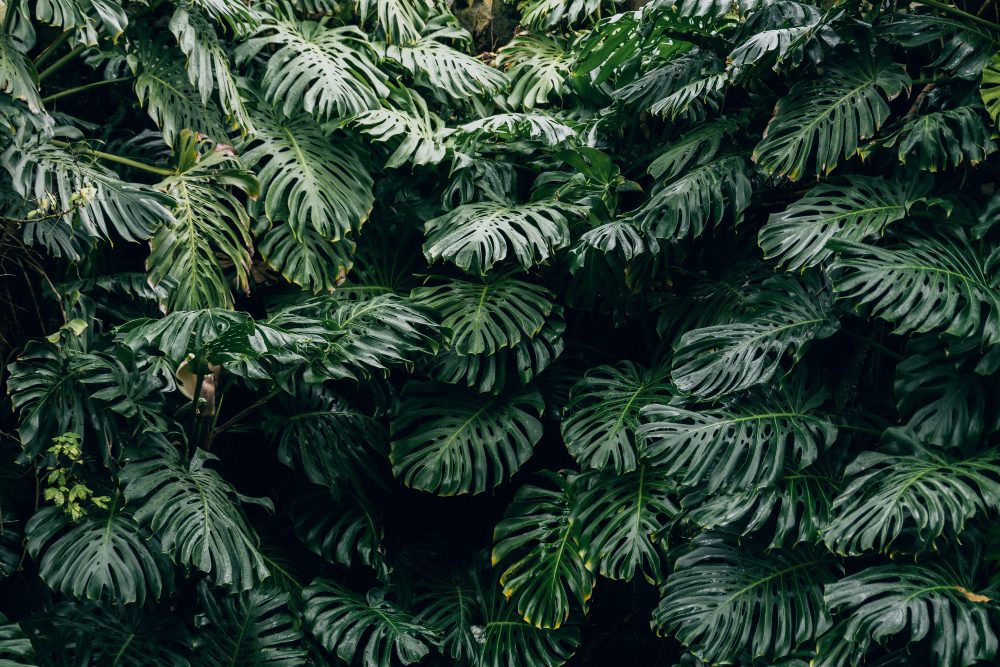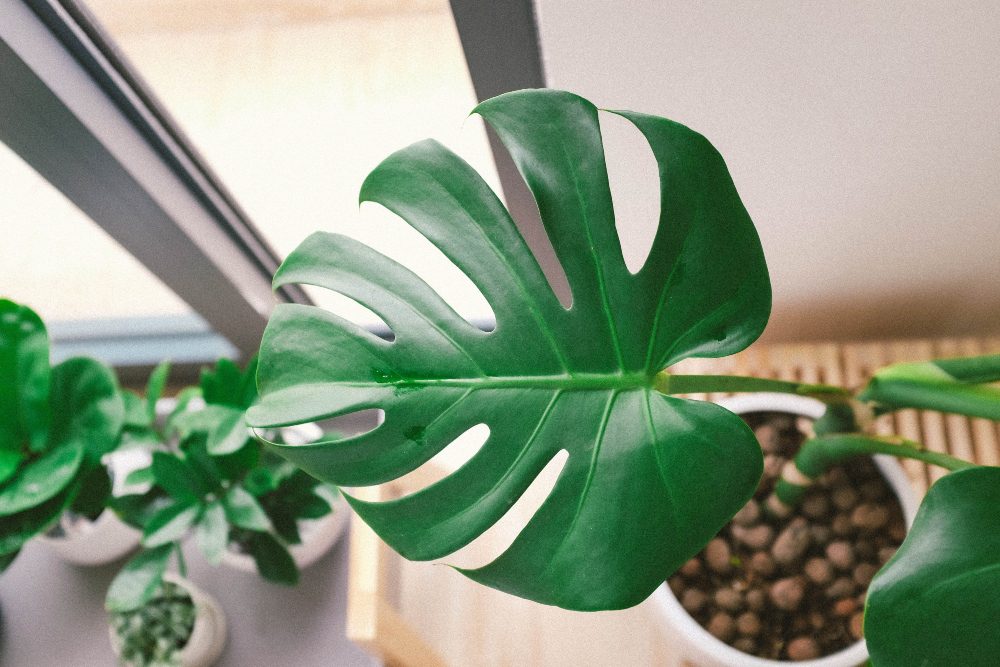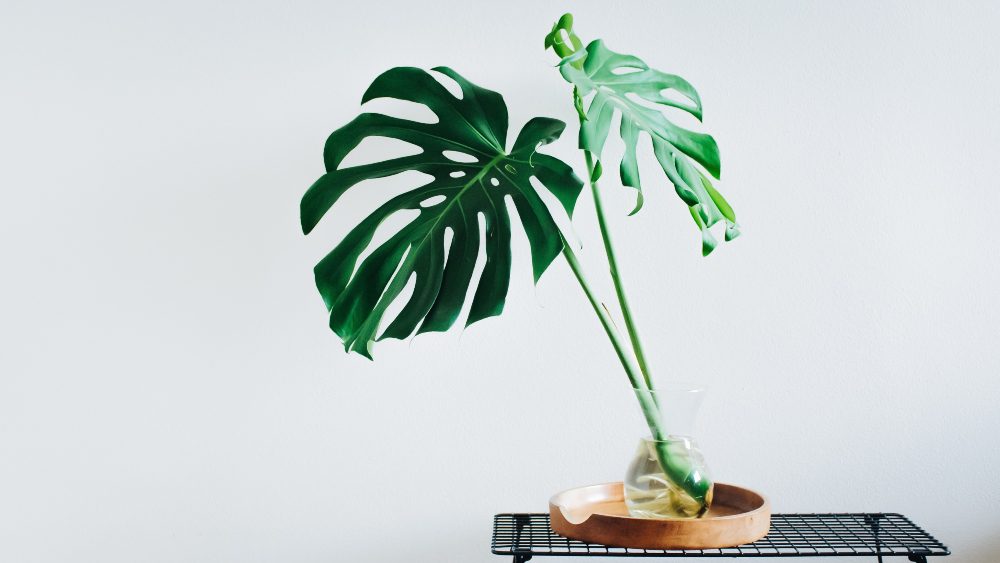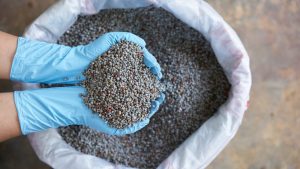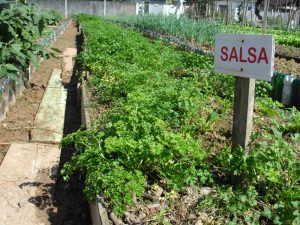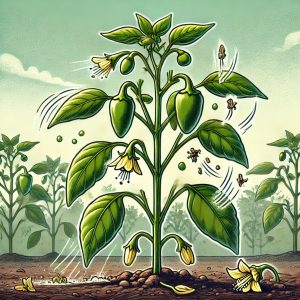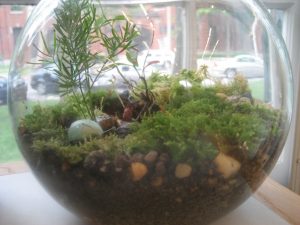Monstera varieties, often celebrated for their unique beauty, have captivated plant enthusiasts worldwide. This article delves into the world of these rare and exotic plants. We explore the most uncommon Monstera plants, unraveling their distinct characteristics and the allure they hold for collectors and plant lovers.
Overview of Monstera Varieties
Contents
- 1 Overview of Monstera Varieties
- 2 Spotlight on Rare Monstera Varieties
- 3 Caring for Uncommon Monsteras
- 4 Monstera Varieties in Home Decor
- 5 Conservation and Ethical Collecting
- 6 FAQ on Monstera Varieties
- 6.1 What makes Monstera varieties rare?
- 6.2 Can I grow rare Monstera varieties outdoors?
- 6.3 How often should I water my Monstera?
- 6.4 Are Monstera varieties pet-friendly?
- 6.5 How can I increase the fenestrations on my Monstera leaves?
- 6.6 Where can I buy rare Monstera varieties?
- 6.7 Can I propagate my Monstera?
- 6.8 Why is my Monstera not variegated?
- 6.9 How do I care for a Monstera in winter?
- 6.10 Do Monstera varieties clean the air?
- 7 Conclusion
With their striking foliage and robust growth, Monstera plants have long been a centerpiece in plant collections. This section explores the allure and diversity of Monstera varieties, highlighting their unique features and the reasons behind their popularity.
Introduction to Monstera Plants
Monstera, native to tropical regions, are renowned for their large, glossy leaves and distinctive fenestrations. These plants belong to the Araceae family and are often favored for their air-purifying qualities and low maintenance. Their ability to adapt to various indoor environments makes them popular for plant enthusiasts.
Popularity and Appeal
The growing fascination with Monstera varieties stems from their diverse leaf patterns and sizes. Each type presents a unique aesthetic, from the well-known Monstera Deliciosa to the rarer Monstera Obliqua.
The plant’s adaptability and resilience contribute to its widespread popularity among beginners and seasoned collectors. Incorporating greenery into living spaces has further elevated the status of these exotic plants, making them a symbol of sophisticated and sustainable living.
Spotlight on Rare Monstera Varieties
In Monstera varieties, some stand out for their rarity and extraordinary features. This section focuses on these uncommon species, unraveling the mystique that surrounds them.
Discovering the Uncommon
In the quest for rare Monstera varieties, enthusiasts uncover a world of unique beauty and diversity. Here are some of the most sought-after types, each with its distinct charm:
Monstera Obliqua: Often confused with Monstera adansonii, the true Obliqua is exceedingly rare. Its leaves are so heavily fenestrated that they appear more like a delicate lattice than a solid leaf. This ethereal quality makes it a collector’s dream.
Variegated Monstera Deliciosa: This variety features stunning variegation, with patches of white or cream against a deep green. Each leaf is unique, creating a striking visual display. Its rarity and beauty make it highly desirable.
Monstera Adansonii Var. Laniata: Known for its smaller, heart-shaped leaves with large holes, the Laniata variant is a charming addition to any collection. Its distinctive fenestrations are more uniform and cover a larger leaf area than other Adansonii varieties.
Monstera Aurea (Marmorata): This variety stands out with its yellow variegation. The golden splashes of color on its leaves offer a stunning contrast to the usual green, making it a vibrant and eye-catching specimen.
Monstera Siltepecana: Prized for its smaller, elongated leaves with a silvery sheen, this variety offers a different aesthetic. Its more understated appearance is perfect for those who appreciate the subtler beauty of Monsteras.
Monstera Borsigiana Albo Variegata: Similar to the Deliciosa, this variety has a more compact growth habit. The white variegation is less predictable, creating a mosaic of green and white on each leaf.
Each of these rare Monstera varieties brings a unique element to plant collections, their characteristics appealing to different tastes and preferences. Their rarity makes them prized possessions and symbols of the extraordinary diversity found in nature.
Distinct Characteristics
What sets these rare varieties apart are their distinctive traits. For example, the Monstera Aurea flaunts yellow variegation, while the Monstera Siltepecana is celebrated for its smaller, elongated leaves with a silvery sheen. These variations add to the visual appeal and reflect the adaptability and diversity within the Monstera family. Collectors and enthusiasts cherish these varieties for their uniqueness, often going to great lengths to add them to their indoor gardens.
Caring for Uncommon Monsteras
Nurturing rare Monstera varieties requires specific care to maintain their health and beauty. This section provides essential tips and solutions for everyday challenges associated with these exotic plants.
Light Requirements
Monstera varieties are known for their love of bright, indirect light, which is crucial for their overall health and development. They thrive in environments where they receive plenty of light but are shielded from the harsh direct rays of the sun.
Direct sunlight can cause the leaves to burn, leading to brown spots and faded colors. On the other hand, insufficient light can result in leggy growth, with the plant stretching towards the nearest light source.
To achieve the ideal balance, place your Monstera near a window with sheer curtains or in a room with ample ambient light. This setup ensures the plant receives enough light to maintain its vibrant foliage and encourage healthy growth patterns.
Watering and Humidity
Watering your Monstera correctly is vital for its growth. These plants prefer soil that is moist but not soggy. Overwatering can lead to root rot, a common issue in Monsteras. To avoid this, allow the top inch of the soil to dry out before watering again. This method ensures the roots have enough moisture without being submerged in water for prolonged periods.
Additionally, Monsteras flourish in high-humidity environments, mimicking their native tropical habitat. Using a humidifier in dry climates or during winter can help maintain the ideal humidity level.
Regular misting also benefits the plant, but it’s crucial to avoid overdoing it, as this can lead to leaf problems. A balanced approach to watering and humidity is critical to keeping your rare Monstera varieties healthy and thriving.
Soil and Fertilization
The right soil mix is essential for the health of Monstera varieties. These plants require well-draining soil to prevent waterlogging and root rot. A combination that includes peat, perlite, and pine bark is ideal.
The peat retains moisture without becoming soggy, while perlite and pine bark improve aeration and drainage. This combination ensures the roots receive the proper air and water.
Fertilization plays a vital role in the growth and health of Monstera plants. Using a balanced, water-soluble fertilizer is beneficial during the growing season, typically spring and summer. This provides essential nutrients that support leaf growth and overall plant health.
Fertilize once a month, following the recommended dosage, to avoid over-fertilization, which can harm the plant. In the dormant season, reduce or stop fertilizing as the growth slows.
Pest Management
Monsteras, like any indoor plant, can be susceptible to pests. Common pests include spider mites, mealybugs, and scale insects. These pests can cause damage to the leaves and, if left untreated, can weaken the plant’s overall health.
Regular inspections are crucial for early pest detection. Look under leaves and along stems for signs of infestation. If pests are found, treatment should be prompt. Insecticidal soap or neem oil are effective natural options.
Apply according to the instructions, ensuring that you cover all affected areas. Preventive measures, like keeping the leaves clean and providing good air circulation, can also help keep pests at bay.
By giving attention to soil quality, fertilization, and pest management, you can create an ideal environment for your rare Monstera varieties to flourish. These practices are crucial to nurturing these exotic plants and enjoying their unique beauty in your indoor garden.
Variegation Maintenance
Variegated Monstera varieties, known for their strikingly patterned leaves, require specific care to maintain their unique coloration. Variegation in these plants results from a lack of chlorophyll in specific cell layers.
Providing the right amount of light is essential to preserve and enhance this feature. Adequate light encourages the plant to produce more variegated leaves. However, it’s a delicate balance as too much direct sunlight can damage the lighter parts of the leaf, while insufficient light can lead to more green growth, reducing the variegation.
It is vital to monitor the plant’s exposure to light and adjust its position as needed. A spot that receives bright, indirect light for most of the day is ideal. Rotating the plant regularly ensures all sides receive equal light, promoting even growth and variegation.
Remember, each variegated Monstera is unique, and observing how your specific plant reacts to its environment will guide you in providing the best care.
Leaf Fenestration
Leaf fenestration, the characteristic holes and splits in Monstera leaves, is a trait that becomes more pronounced as the plant matures. Varieties like Monstera Obliqua are primarily known for their highly fenestrated leaves.
Achieving this level of fenestration requires patience and the right growing conditions. Light plays a significant role in the development of fenestrations. A Monstera receiving adequate bright, indirect light will develop larger fenestrations as it grows.
Humidity is another crucial factor. These plants originate from tropical environments, so replicating this atmosphere with higher humidity can encourage better fenestration. Using a humidifier, placing a water tray near the plant, or regular misting can help increase the surrounding humidity.
As the plant matures in these conditions, the leaves will develop more distinctive holes and splits, showcasing the unique beauty of the Monstera variety. Remember, each plant grows at its own pace, so patience is essential while waiting for those distinctive fenestrations to appear.
Growth Support
As Monstera plants grow, especially the taller varieties, they often require additional support to maintain their structure and encourage healthy growth. In their natural habitat, Monsteras are climbers, using aerial roots to attach themselves to more giant trees and structures. Providing a similar support system in a home environment can greatly benefit the plant.
Stakes are a simple yet effective way to support your Monstera. They offer a sturdy structure for the plant to lean on as it grows. Insert the stake into the soil near the plant’s base, careful not to damage the roots. As the Monstera grows, you can gently tie its stems to the stake with soft plant ties, ensuring they are secure but not overly tight.
Moss poles replicate the natural growing conditions of Monsteras even more closely. These poles, covered in moss, provide support and a surface for the aerial roots to attach to. The moss retains moisture, which is beneficial for the sources. To use a moss pole, insert it into the soil and gently press the aerial roots or stems against it. Over time, the plant will naturally start to climb the pole.
For both stakes and moss poles, it’s essential to install them when the plant is relatively young and more accessible to train. As the Monstera grows, it will rely on this support, growing upwards and becoming more structured.
Regularly check the ties and adjust them to accommodate the plant’s growth. By providing this support, you can encourage your Monstera to develop a robust and healthy structure and enjoy its natural climbing habit.
Monstera Varieties in Home Decor
Monstera varieties have become a popular choice in home decor, bringing a touch of the tropics into living spaces. Their distinct leaves and varying sizes make them versatile for different interior styles. This section explores how to integrate Monstera varieties into home decor effectively.
Creating Focal Points with Monstera Varieties
With their unique foliage, Monstera varieties can transform any space into an eye-catching display. The larger types, such as Monstera Deliciosa, are ideal for making a bold statement. Their large, split leaves can fill empty corners or flank furniture, creating a lush, tropical feel. These plants can grow tall, making them perfect as natural, living sculptures.
Smaller Monstera varieties, like Monstera Adansonii, offer versatility in home decor. Their smaller, intricately patterned leaves are great for adding texture and interest at various levels.
Displaying them on high shelves or hanging planters can draw the eye upward, making the room feel larger. Their trailing vines can also add a whimsical touch to the space, especially in areas where they can cascade freely.
Complementing Interior Styles
Monstera varieties are not only versatile in size but also in style. A single Monstera plant can be a focal point in minimalist interiors without overwhelming the space. Its organic form provides a soft contrast to clean lines and simple color palettes. This can bring a sense of calm and a splash of color to minimalistic rooms.
Different Monstera varieties can be grouped in more vibrant and eclectic settings to create a mini indoor jungle. This layered approach can add depth and a sense of adventure to the decor. The varied leaf shapes and sizes of different Monstera varieties can create an exciting and dynamic display.
Moreover, the lush green hues of Monstera varieties complement natural materials like wood, stone, and textiles. They can bring out the warmth in wooden furniture, add softness to stone elements, and harmonize with different fabrics in the room. Incorporating Monstera varieties into home decor is not just about adding plants. It’s about creating a cohesive, inviting space where nature and design coexist harmoniously.
Natural Room Dividers
Monstera varieties can be natural room dividers in open-plan living spaces or studios. Larger types, such as the Monstera Deliciosa, with their broad leaves and tall stature, are particularly effective.
They can subtly separate living areas from dining spaces or create a secluded nook within a larger room. This use of Monstera varieties adds a dynamic and organic element to the layout of a stretch, breaking up the area visually without the need for solid partitions.
Privacy Screens
Monstera varieties are also ideal for privacy screens, especially in front of large windows or glass doors. They provide a natural shield from outside view, allowing light to filter through their leaves. This can be particularly useful in urban settings where buildings are close together. Smaller Monstera varieties can be placed on window sills or in hanging planters to achieve a similar effect, offering privacy without sacrificing natural light.
Enhancing Air Quality
Another significant functional benefit of Monstera varieties is their air-purifying qualities. These plants can help remove toxins from the air, such as formaldehyde and benzene, making them a healthy addition to any space. Placing Monstera varieties in bedrooms can create a cleaner and fresher sleeping environment. Similarly, workspaces or home offices can help improve air quality, potentially enhancing focus and productivity.
Conservation and Ethical Collecting
As the popularity of Monstera varieties grows, it’s crucial to consider the conservation and ethical collecting of these plants. This section addresses the importance of sustainable practices in cultivating and collecting Monstera varieties.
Promoting Sustainable Cultivation
The demand for rare Monstera varieties has led to challenges in conservation. It’s essential to support nurseries and growers who use sustainable cultivation practices.
These practices include propagating plants from cuttings or seeds rather than taking them from the wild. By purchasing Monstera varieties from reputable sources, enthusiasts can help preserve natural populations and biodiversity.
Understanding the Impact of Overcollection
Overcollection of wild Monstera varieties can harm their natural habitats and ecosystems. Certain Monstera varieties are already facing threats due to overharvesting. Plant enthusiasts should be aware of the origins of their plants and avoid buying species known to be endangered or collected from the wild.
Ethical Collecting Practices
Ethical collecting involves being mindful of the sources of Monstera varieties. Verifying that the plants are being sold legally and sustainably is essential. Enthusiasts can also contribute to conservation by participating in plant swaps and community sharing, which promotes a sustainable hobby without impacting wild populations.
FAQ on Monstera Varieties
What makes Monstera varieties rare?
A rarity in Monstera varieties is often due to unique features like unusual variegation, leaf shapes, or limited natural habitats. Some are rare because they are challenging to propagate.
Can I grow rare Monstera varieties outdoors?
It depends on your climate. Monstera varieties prefer warm, humid environments similar to their native tropical habitats. In cooler temperatures, they are better suited as indoor plants.
How often should I water my Monstera?
Water your Monstera when the top inch of soil feels dry. Overwatering can lead to root rot, so letting the soil dry out between waterings is essential.
Are Monstera varieties pet-friendly?
Most Monstera varieties are toxic to pets if ingested. It’s best to keep these plants out of reach of pets.
How can I increase the fenestrations on my Monstera leaves?
Fenestrations increase as the plant matures. Provide adequate bright, indirect light and proper care to encourage more fenestrations.
Where can I buy rare Monstera varieties?
Purchase rare Monstera varieties from reputable nurseries or plant shops. Ensure they practice ethical and sustainable cultivation to avoid contributing to overharvesting.
Can I propagate my Monstera?
Most Monstera varieties can be propagated from stem cuttings. Research the specific method for your type to ensure successful propagation.
Why is my Monstera not variegated?
If a variegated Monstera is not receiving enough light, it may produce more green leaves. Ensure your plant gets adequate indirect light to maintain variegation.
How do I care for a Monstera in winter?
In winter, reduce watering and cease fertilization. Keep your Monstera away from cold drafts and maintain a consistent temperature.
Do Monstera varieties clean the air?
Monstera varieties are known for their air-purifying qualities. They can help remove toxins from indoor air, improving the environment.
Conclusion
Growing Monstera varieties reward homeowners with beautiful and fascinating decorations in their living spaces. By understanding their care requirements and the importance of conservation, you can ensure these remarkable plants continue to thrive and beautify your home.

